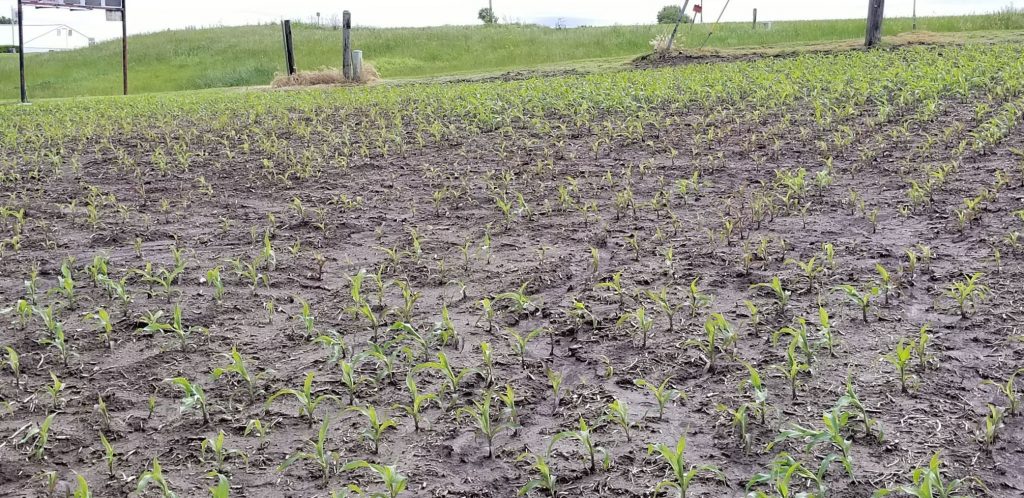Purple Corn Blues
Dana Harder, Field Agronomist
If you were lucky enough to get your corn planted in April or early May this year, you may notice some of it is now looking purple. There is no reason to worry as this is associated with the cold, wet soil conditions experienced across most of the Midwest. These symptoms are typically observed before plants reach the V6 growth stage. While the major culprit this year is cool, wet soil; these symptoms can be caused by other factors.
What is going on to cause this phenomenon to happen? It is related to early-season stress that hinders nutrient uptake and root development. Under saturated conditions lasting over 48 hours, root function in plants is impaired leading to:

- Restricted nutrient uptake
- Restricted water uptake
- Temporarily stunted root growth
- Increased likelihood of root death
- Increased disease susceptibility
The conditions listed all lead to reduced root growth and utilization of photosynthates by the root. As a result, photosynthates are stockpiled in exess in plant tissues. This explains the purpling and reddish color observed. These plants may not be actively taking up nitrogen causing a yellowish, stunted appearance.

The first thought many growers observing these symptoms have is a phosphorus (P) deficiency. In a true case of P deficiency, symptoms will continue after soils dry out and there are prolonged periods of sunlight. When plants are young, they are transitioning to nodal roots which sustain the plant to maturity. Because P is immobile in soil, plant roots must intercept it in the soil. Plants also form a symbiotic relationship with vesicular-arbuscular mycorrihizae (VAM) to intercept soil P. These hyphae extend the nutrient absorption zone and can be up to 100 times longer than the roots themselves. Soil conditions including, compaction, pH less than 5.5, and severely dry soils, inhibit this relationship or root development and can result in temporary P deficiency. As soil conditions improve, promoting root and VAM development, these symptoms will disappear.
Finally, different hybrid genetics may appear more purple than others due to differing responses to early stress. It can be difficult to tell this in a field with a single hybrid. Your Burrus representative can help you determine which hybrids are more likely to exhibit these symptoms. The best solution for this season’s symptoms is for Mother Nature to start providing some heat and sun to promote healthy plant growth.






